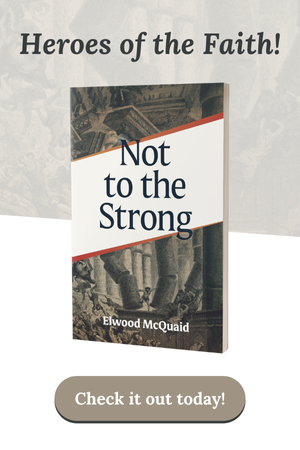‘Re-Imagining’ God
Although some attribute the emerging pagan worldview to the Cultural Revolution of the 1960s and early ’70s, the professing church actually shifted toward paganism in 1993 with the first and now-infamous feminist Re-Imagining Conference* in Minnesota. Promoted by mainline denominations under the auspices of the World Council of Churches’ “Decade of Solidarity with Women,” the conference pushed an agenda well beyond the limits of contemporary women’s issues.1
As each of the 34 speakers took the podium, more than 2,000 women chanted, “Bless Sophia, dream the vision, share the wisdom dwelling deep within.”2 Throughout the conference they sang, “O great spirit, earth and wind and sea, you are inside and all around me.”3 (A declaration in the 1998 conference program read, “I FOUND GOD IN MYSELF, AND I LOVED HER. I LOVED HER FIERCELY.”4)
Among the speakers was Chung Hyun Kyung, associate professor of ecumenical studies at Union Theological Seminary in New York City. She presented God as an all-encompassing energy force uniting and permeating all that exists. She encouraged “pranic healing,” or tapping into cosmic energy. “This life-giving energy came from god [sic] and it is everywhere,” she said. “It is in the sun and in the ocean; it is from the ground and it is from the trees.”5
Consistent with a blatant pagan agenda, everyone in the assembly was encouraged to affirm her “godhood” by placing a red dot on her forehead to signify the divine presence—effectively alienating all who would not comply.6 The highlight of the conference featured a pseudo Eucharist of bread and milk mixed with honey offered to the goddess Sophia.7
This mockery of orthodox Christianity was topped 10 years later at the conference reunion in 2003. That event climaxed with a celebration of the “Lady’s Supper” in which the women “bit into the sacramental apple,”8 mimicking Eve’s sampling of the forbidden fruit and calling it an act that brought enlightenment rather than man’s Fall. This view is reminiscent of Gnosticism and has staggering implications.
Interestingly, the popular novel The Shack by William Paul Young records a fictitious conversation in which “Jesus” tells the main character, “Sophia is a personification of Papa’s [God’s] wisdom.”9 Referring to Sophia as the wisdom represented in Proverbs 3 is a clever twist that makes it sound as though Sophia were a hidden biblical character, much as the Gnostics did. In reality, the Hebrew word translated “wisdom” is simply the feminine noun khokhma and conveys the idea of shrewdness, prudence, or dexterity.10 Coupling the word with a feminine definite article is simply a Hebrew literary tool accentuating the value of wisdom.
In the book Wisdom’s Feast: Sophia in Study and Celebration, the authors put forth a practical strategy through which “Sophia has been successfully integrated into the worship and preaching of a number of mainline churches over the past decade.” According to them, Sophia created all things with God, permeates all things, “reigns coequally with God,” and was the one who walked on water “toward her disciples.”11
ENDNOTES
*Conference sponsors included the Presbyterian Church USA; United Methodist, Lutheran, Baptist, Episcopalian, and Mennonite churches; the United Church of Canada; the Church of the Brethren; and Church Women United.
- “Paganism at the Re-imagining Conference in Minneapolis (1993),” BRF Witness (29), no. 3 (1994) <brfwitness.org/Articles/1994v29n3.htm>.
- Ibid.
- Ibid.
- Christopher Lensch, “’‘Re-Imagining’ Review: Radical Feminism in Sheep’s Clothing,” WRS (Western Reformed Seminary) Journal (10), no. 1 (2003) <wrs.edu/Materials_for_Web_Site/Journals/10-1%20Feb-2003/Lensch%20-%20Re-imagining%20Update.pdf>.
- “Paganism at the Re-imagining Conference in Minneapolis (1993).”
- Ibid.
- Katherine Kersten, “Sunday With Sophia,” Good News Magazine <goodnewsmag.org/library/articles/kersten-ma94.htm>.
- Peter Jones, “Pagan Revival in Christian America,” Grace Valley Christian Center, May 7, 1998 <gracevalley.org/sermon_trans/Special_Speakers/Pagan_Revival_in_Christian_ America.html>.
- Paul Young, The Shack (Newbury Park, CA: Windblown Media, 2007), 173.
- “Chokmah” <blueletterbible.org/lang/lexicon/lexicon. cfm?Strongs=H2451&t=KJV>.
- Susan Cady, Marian Ronan, Hal Taussig, Wisdom’s Feast: Sophia in Study and Celebration, cited in Allen O. Morris, “The Church in Bondage: Problems and Trends in the United Methodist Church” <cmpage.org/bondage/appendixd.html>.







